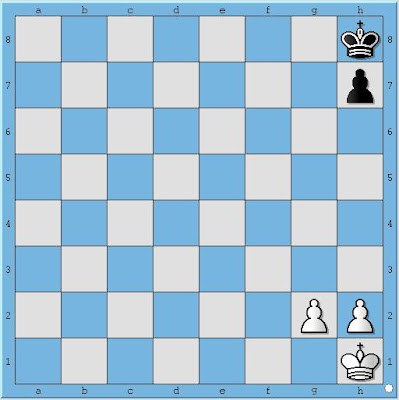Tactical skill impairing your sight

.
.
.
There seems to be a simple reason why it is difficult to make progress in chess. For tactics you have to learn to love variations, for strategy and endgames this addiction to variations tends to impair your sight of the big picture. The approaches seem to mutually exclude each other.
If you see the big picture but you miss the tactical skills to obtain what you want, it is time for tactics. When you start to train tactics you sharpen your eyes to see concrete variations. Once you are skilled in tactics, you have lost your sight to see the big picture. Usually only a coach can help you to overcome this paradox.
The problem is that all chessauthors share this addiction for concrete variations. Watson even devoted a whole book to the subject of concrete variations vs general schemed thinking. In the mean time, books are flooded with concrete positions, giving us a hard time to look behind them.
If you look at my diagrams, you can see that I often try to get rid of the concrete variations and try to regain the holistic vision that lies beyond that. Look at the following attempt.
Diagram 1

.
.
.
White to move.
When the king is on h1, this position is a draw. But when the king is on g1, it is mate in 32. Why? Where does this difference come from?
If you try to solve this by means of concrete variations, it is easy to get lost. But what do you think of the following approach:
diagram 2

.
.
.
White to move.
This diagram shows what the outcome is when you place the king on a certain square.
You can see that there are two "centers of gravity": f7 and h6.
This gives away a hint what the two fighting methods are. On f7 you are squeezing the black king and pawn so they become seperated. On h6 you can force the trade of the pawn, creating a passer.
Thanks to the comments of Ed and LF, I recently realized how important it is to know the fighting methods. The concrete knowledge that Kh1 is a draw while Kg1 is mate in 32 is irrelevant in this story.
For backwards thinking (see previous post), you need to see the big picture.
Interesting ideas, like there is a gestalt switch betwen the concrete and the big picture. In the endgame I usually have no clue what my general plan should be. I suck eggs.
ReplyDeleteYou've convinced me that after Art of Checkmate I need to get back to Silman's endgame book.
your are the bee and chess is the honey, from my perspective.
ReplyDeleteyour single very best post, continue NOT to fail to still read you, after 2.4 years and of how many, save BDK can of this also still be said. thank you the great temposchlucker.
warmest, dk